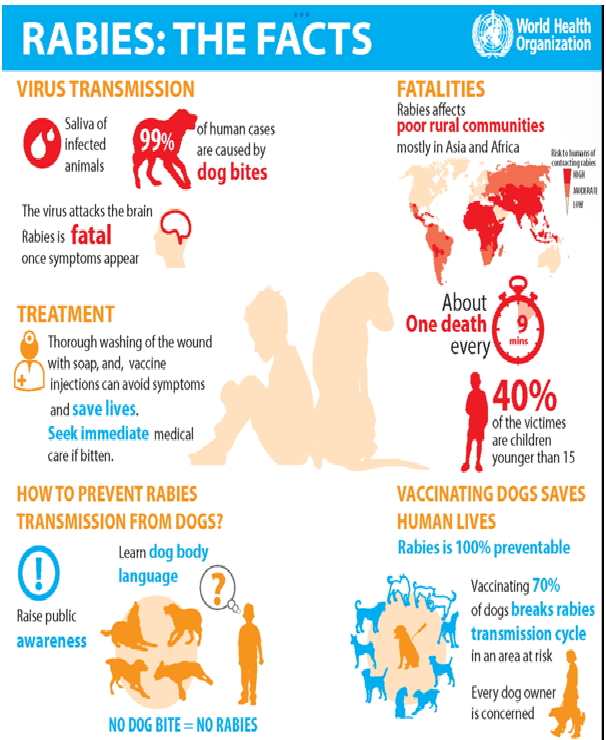Rabies
About the Disease
- Rabies is a disease that is caused by a family of viruses called the lyssaviruses and found in a range of mammals.
- The virus targets the central nervous system and is nearly 100% fatal to the host animal if it succeeds in infecting it.
- Though many animals from cats to crocodiles can be transmitters of the virus, it is most likely to spread to people from the bite of an infected dog or a cat as they are the most common pets.
- Despite being potentially lethal, the virus is slow-moving and it can be several weeks before the disease manifests into a fatal encephalitis which is why administering a vaccine, even after being bitten by a rabid animal, is effective.
Vaccine
- A shot of rabies immunoglobulin (rabies-antibodies against the virus derived either from people or horses) followed by a four-week course of anti-rabies vaccine, is nearly guaranteed to prevent rabies.
How is the vaccine made?
- The vaccine is made up of an inactivated virus that is expected to induce the body into producing antibodies that can neutralize the live virus in case of infection.
- There are also test vaccines that involve genetically modified viruses. There is no single-shot rabies vaccine or one that offers permanent immunity.
Eliminating Rabies
- The WHO says India is endemic for rabies and accounts for 36% of the world’s deaths, although as per available information, it causes 18,000-20,000 deaths every year.
- India has committed to do so by 2030, even though it is widely acknowledged that this elimination requires vaccination of dogs.
- Like in people, vaccinating animals too doesn’t guarantee lifelong immunity from the disease.
- The government in its 2021 plan, called the ‘National Action for Plan — Rabies Elimination’, aims to vaccinate at least 70% of all dogs in a defined geographical area annually for three consecutive years.
- With this, a degree of herd immunity is expected leading to eventual elimination within eight years. Rather than inoculate all dogs, the plan is to identify ‘rabies hotspots’ in the country and target them.
| Practice Question
1. India has seen a rise of dog bites in recent times. What are the measures the state and local government can take to protect the life of both animals and humans? |




